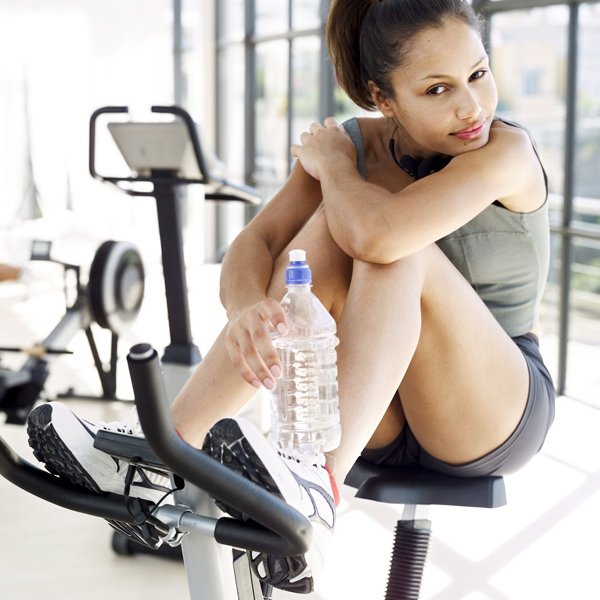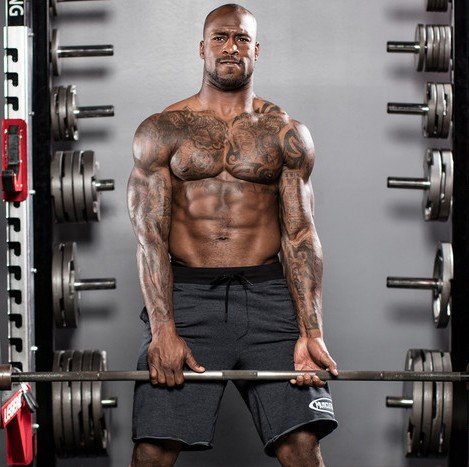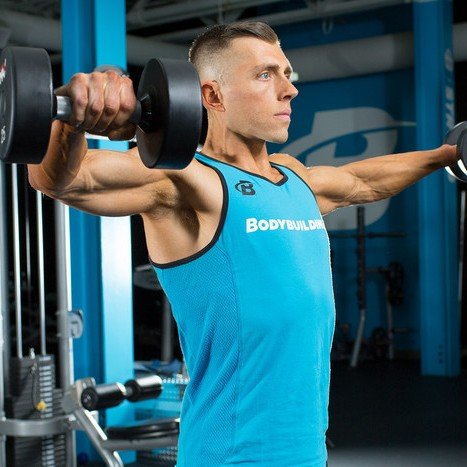Whether you're trying to build muscle, gain strength, or attempting to get your body fat into the single digits, you have to commit yourself 24/7. That's not hyperbole. Sure, the really hard work is a solid hour or two in the gym, but that's just the training stimulus. It's what you do during those other 22-23 hours that will determine whether you build maximal muscle or aggressively support your efforts to get lean.
The recovery process, which occurs outside the gym, has a lot to say about how much energy and passion you'll be able to pour into your next workout. Sure, it includes what you eat, which probably has the biggest impact on your subsequent performance. But there's more to it than that—a lot more.
What's the Deal With Muscle Recovery?
A number of biochemical processes occur on the cellular level during hard training. These include damage to muscle fibers and the depletion of muscle glycogen. An inflammatory response also occurs, which often leads to delayed-onset muscle soreness (DOMS). Sure, you could just leave the gym and proceed with your day as if you hadn't trained. But the point of active recovery is to maximize the positive effects and minimize the negative effects of this muscle damage and inflammatory response.
According to research published in Sports Medicine, neglecting active recovery may leave you unable to train at the required intensity or complete the required load at your next training session. "Higher levels of fatigue may also predispose the athlete to injury. Furthermore, full recovery is necessary for optimal competition performance."
Unfortunately, recovery isn't a one-size-fits-all proposition. Variables such as your age, genetics, type of workout, and training experience come into play. A 25-year-old male competitive bodybuilder and a female beginner in her mid-50s doing full-body workouts won't have identical recovery needs. However, the following tips can help nearly anyone maximize their post-workout recovery.
1. Spike Your Intra-Workout Shaker Bottle With Carbs, BCAAs, or Both
Drinking plain water between sets can be helpful for maintaining hydration and exercise performance while regulating body temperature. But spiking your H2O with carbs or branched-chain amino acids can help maximize both performance and recovery.
"Carbs are your muscles' primary energy source," says Bodybuilding.com nutrition editor Paul Salter, MS, RD. "The harder and more intensely you train, the more your body relies on carbohydrates for immediate fuel. This is especially true for the short high-intensity bursts that make up bodybuilding and powerlifting."
But feeling more powerful during your workout is only the beginning of the story. "Carbohydrates are anticatabolic, meaning they minimize muscle breakdown," Salter says. "When consumed during training, they can help to minimize total muscle damage from the workout. This can positively influence the recovery period, because there's less rebuilding that needs to occur."
To get the most benefit, you need to consider the type of carbohydrate (fast-digesting like dextrose aka glucose or a carb supplement), exercise duration, and ensuring your carbs-to-fluid ratio optimizes absorption without causing gastrointestinal distress.
Carb Requirement in Resistance-Training Workouts
| Session Length | Fast-Digesting Carbs | Water |
|---|---|---|
| Less than 45 min. | 0 g | 16-24 oz. |
| 46-60 min. | 15-30 g | 16-24 oz. |
| 60-90 min. | 30-50 g | 24 oz. |
| 90+ min. | 50-75 g | 32 oz. |
Carbs on their own are great. With the branched-chain amino acids leucine, isoleucine, and valine, they're even better. Carbs and BCAAs have been suggested to reduce muscle breakdown and limit cortisol levels post-workout when measured against plain water. What's more, sipping on them before or during your workout may help reduce delayed soreness.
2. Foam Roll After Your Workout
Massages feel great, but they can be expensive and time-consuming and there's currently little science supporting their impact on muscle soreness or recovery. That doesn't mean you shouldn't get a massage if you like it, but consider less-expensive alternatives, like strategic foam rolling.
The science has been stacking up for the last few years in support of what's known more technically as self-myofascial release. A 2015 Canadian study found foam rolling effectively reduced delayed-onset muscle soreness and limited ensuing deficits in physical performance. Subjects did a 20-minute foam-rolling session immediately post-workout, as well as 24 and 48 hours afterward.
You might think foam rolling can be replaced with static stretching, but you'd be wrong. Static stretching has been found to be ineffective in reducing delayed-onset muscle soreness.
If you sometimes blow off your foam-roller sessions because you're Too beat after your workout, try this: Use a foam roller between every set of your final exercise of the day. You'll get the benefits without extending the length of your workout.
3. Use an Infrared Sauna to Treat Delayed-Onset Muscle Soreness
Infrared saunas use heat and light to create heat in the body. The research supporting them is limited but promising; in one study, subjects reported a reduction in delayed-onset muscle soreness following treatment. It's also known to be a favorite recovery modality of chronically beat-up NFL players.
"Infrared saunas can help relax tight muscles and joints, which is beneficial for hard-training lifters," says Bodybuilding.com science editor Krissy Kendall, PhD, CSCS. "Because infrared saunas increase core temperature, heart rate, blood pressure, and sweating, you should be well-hydrated when undergoing treatment."
Don't confuse infrared therapy with a regular sauna or even a Jacuzzi post-workout. After a hard training session, your core temperature is already elevated; using a sauna or Jacuzzi right afterward can cause dehydration, heat cramps, or in severe cases, hyperthermia. For that very reason, infrared therapy typically isn't done immediately post-workout.
Owning an infrared sauna is likely far out of your budget, but they're becoming common features in spas, wellness center, tanning business, and even many gyms. If you're in the middle of a particularly grueling lifting protocol or competition prep, consider it a way to reward yourself.
4. Bump up the Protein Content in Your Post-workout Shake
Most of us add a 20-gram scoop of protein powder to the carbs in our post-workout shake, but a study in Physiology Reports suggests two scoops are better than one for boosting muscle-protein synthesis and recovering from workouts.
Researchers found that protein synthesis increased by 20 percent when subjects consumed 40 grams of whey compared to those who consumed 20 grams. What's more, it didn't matter whether lean body mass was low or high—the uptick in protein synthesis was similar.
5. Fix Your Sleep Issues
Poor sleep can be a nightmare for your physique. In a study published in the journal Elsevier, Brazilian scientists showed lack of sleep and poor quality of sleep can cause an increase in body weight, mainly because of an increase in hunger and appetite. Poor sleep also can impair muscle recovery and protein synthesis through an increase in catabolic hormones and a decline in anabolic ones like testosterone and insulin-like growth factor (IGF-1).
Getting the recommended 7-9 hours of sleep a night is tough enough, but you also need to make sure it's restorative sleep. Here are some tried and true steps to improve sleep quality.
- Keep your room cool, about 70 degrees F or cooler. Rooms without air conditioning and facing the afternoon sun will heat up more quickly in the summertime and take longer to cool. Try room fans or closing the drapes to reduce solar heat.
- Use light-blocking curtains, especially during the summer months, when the sun rises early.
- If external noise is disturbing your sleep, get a white-noise app to drown out the racket. The SleepBot app and Sleep Pillow apps both have white-noise features, and the former even has a helpful sleep quality tracking feature.
- Don't discount the possibility of obstructive sleep apnea, a sinister health issue that hits bodybuilders and strength athletes disproportionately, often without their knowledge. Even light or moderate cases of sleep apnea will result in fatigue, no matter how long you stay in bed.
6. Use Light Cardio to Bring Your Heart Rate Back to Normal
Here's another post-workout staple that most of us only pay lip service to: a cool-down session to bring your heart rate within 10-20 beats of your resting heart rate (RHR). The research suggests that engaging in light, continuous aerobic activity in which you continue to perspire may help remove metabolic byproducts (lactate, ammonia, and hydrogen ions) associated with anaerobic exercise. As a result, you'll recover more quickly for your next workout.
First, figure out your RHR. One way is to measure it first thing in the morning and take an average over several days. When you complete your training session, whether it's high-intensity interval cardio training or resistance training, measure your heart rate again.
For every 10 beats your heart rate is above your RHR, do 2 minutes of light cardio. I recommend using an elliptical trainer on upper-body days, a stationary bike on lower-body days, and whatever apparatus you were already using on cardio days. So, if you measure a heart rate of 135 beats per minute and your RHR is 65, the difference is 70. That means you'll want to do light cardio for 14 minutes.
Finally, it's time to head for the showers and start recovering, so you can come back and do it all again!
Source: Too





